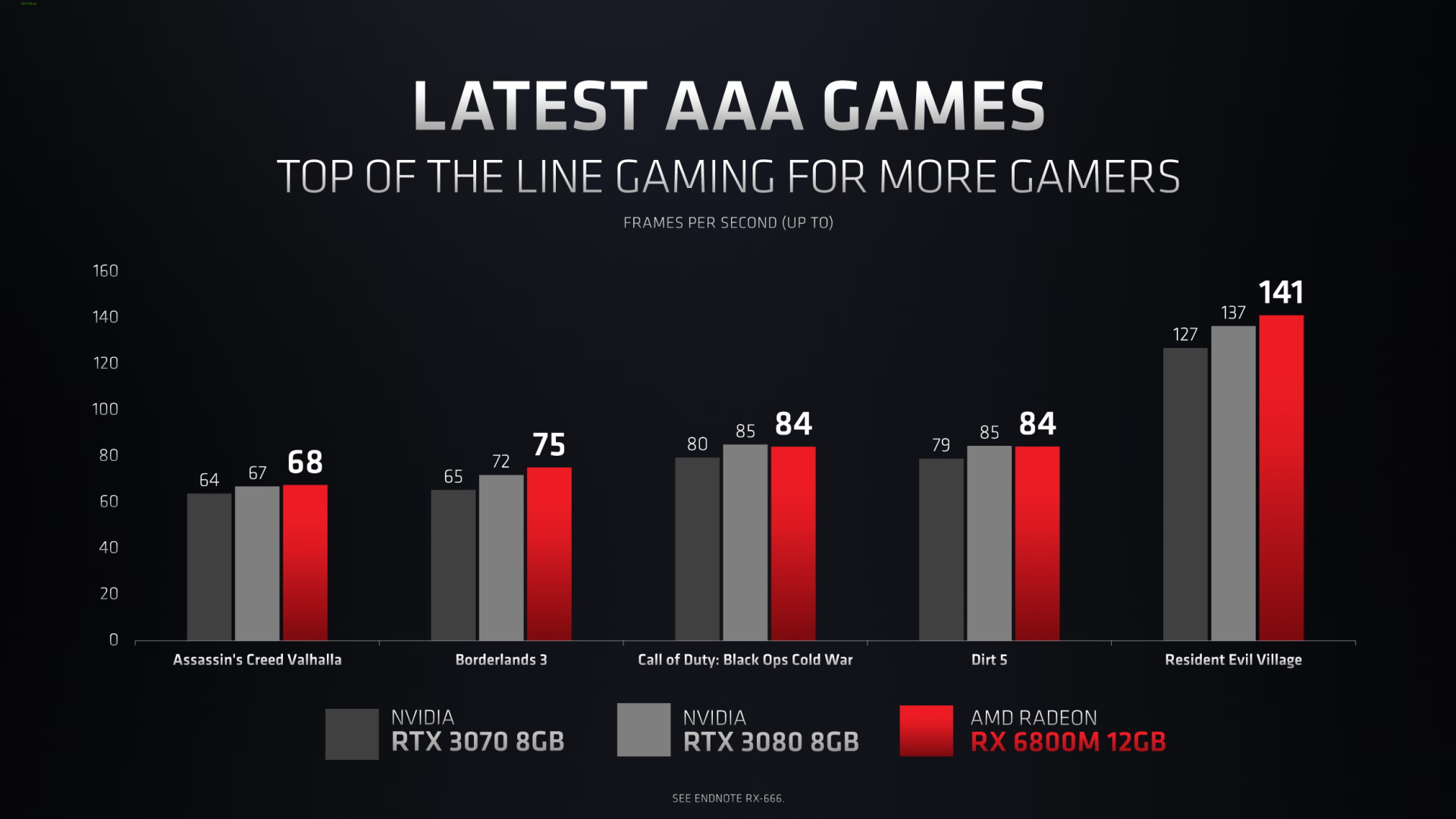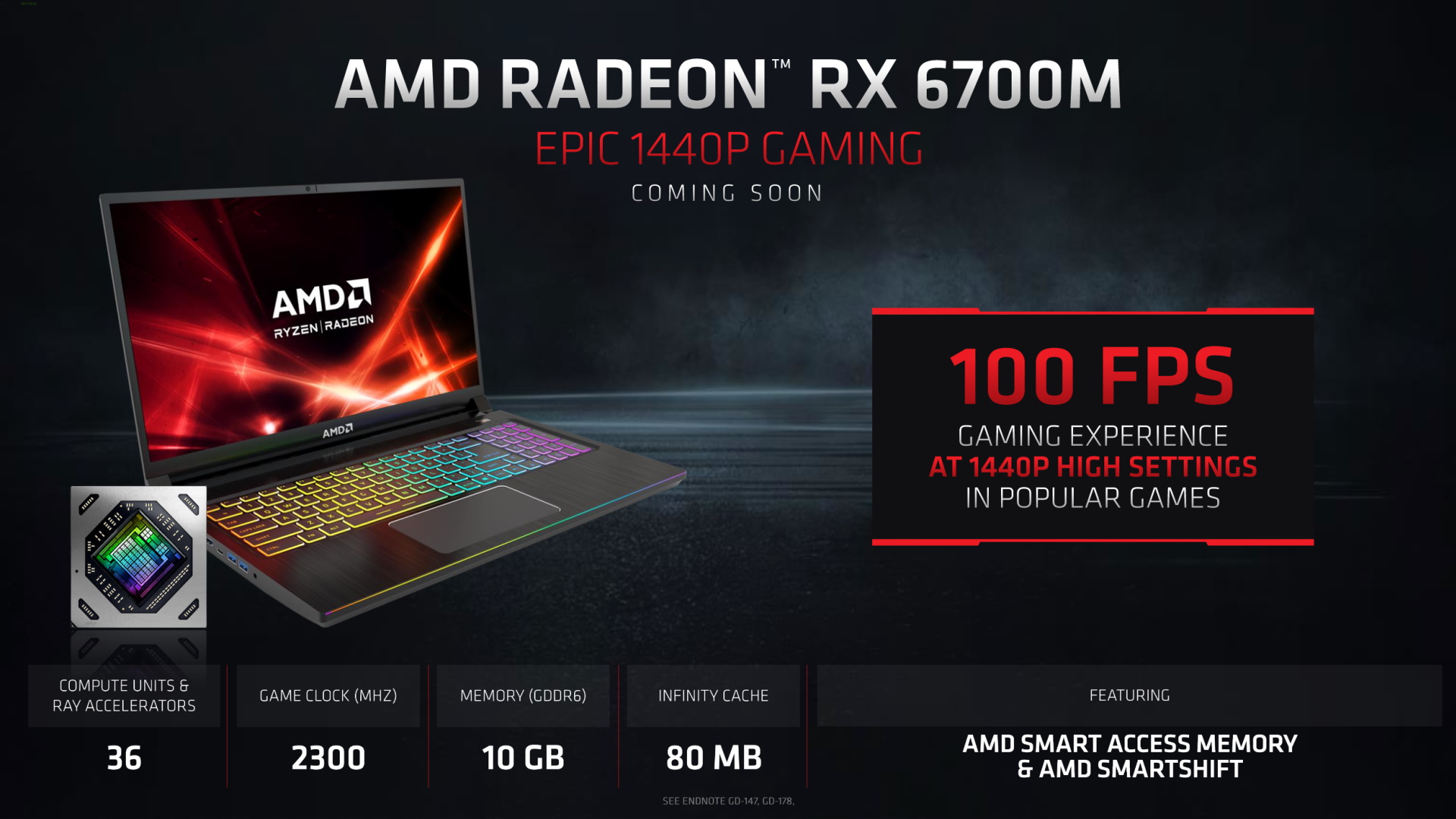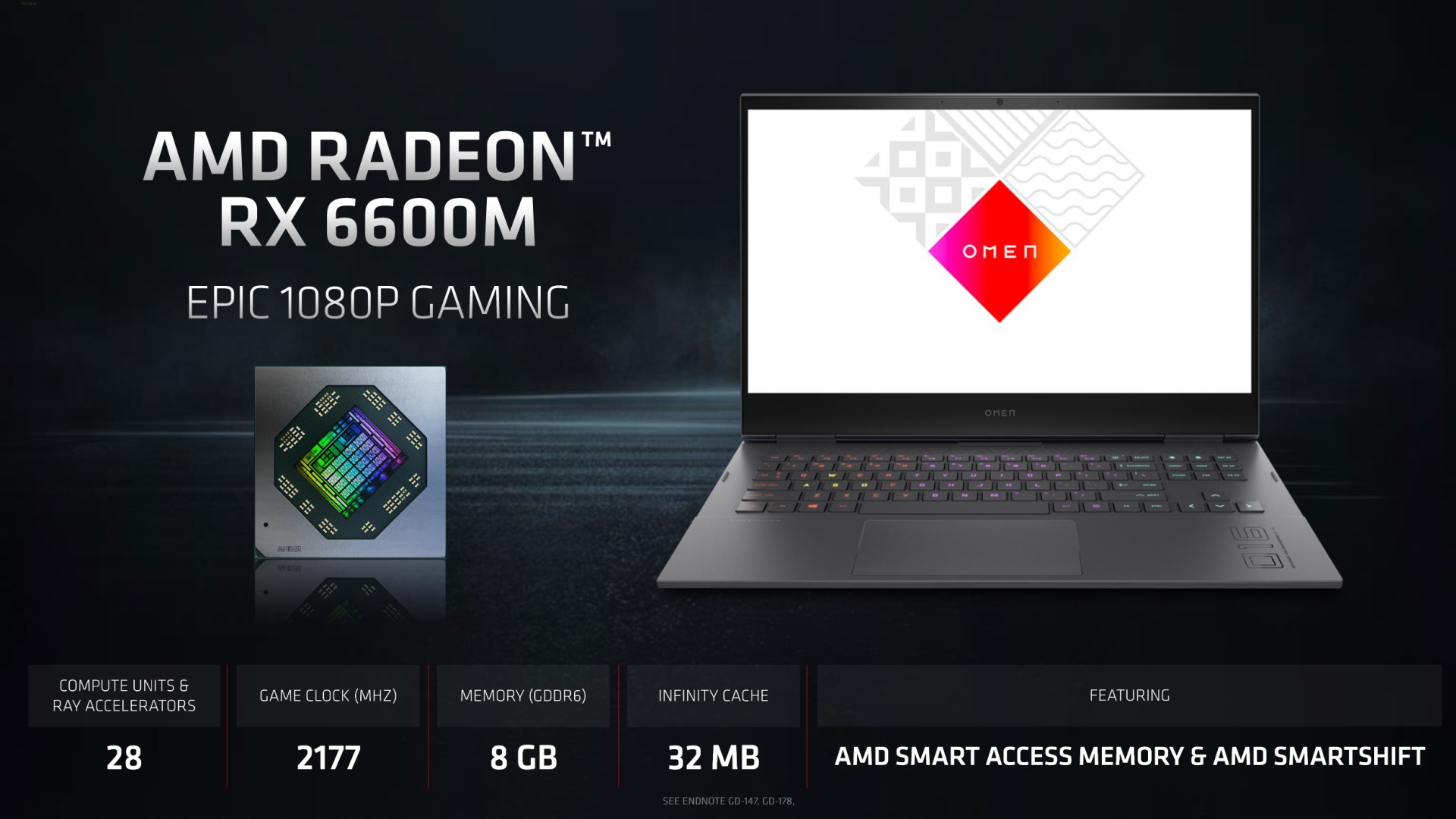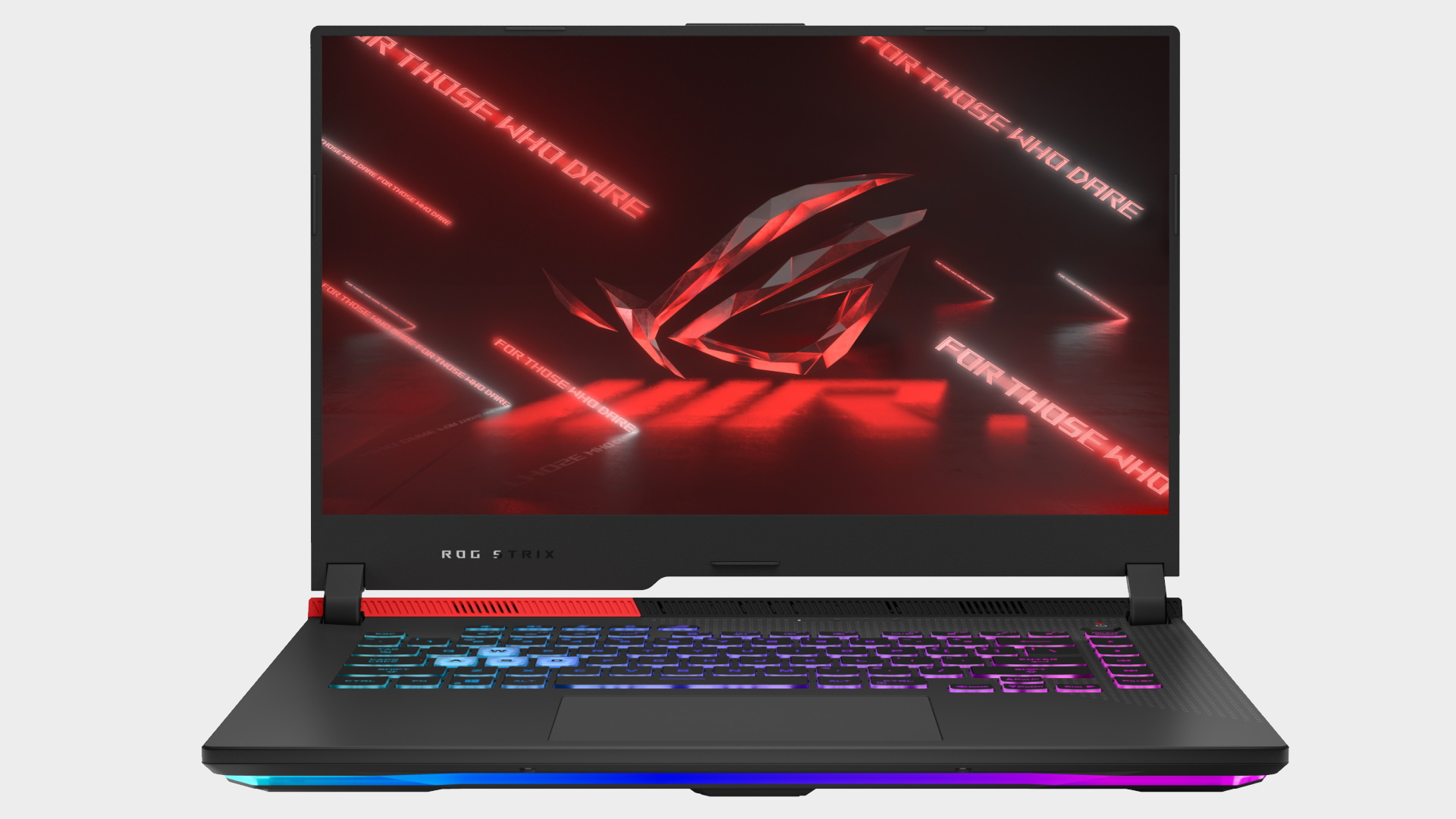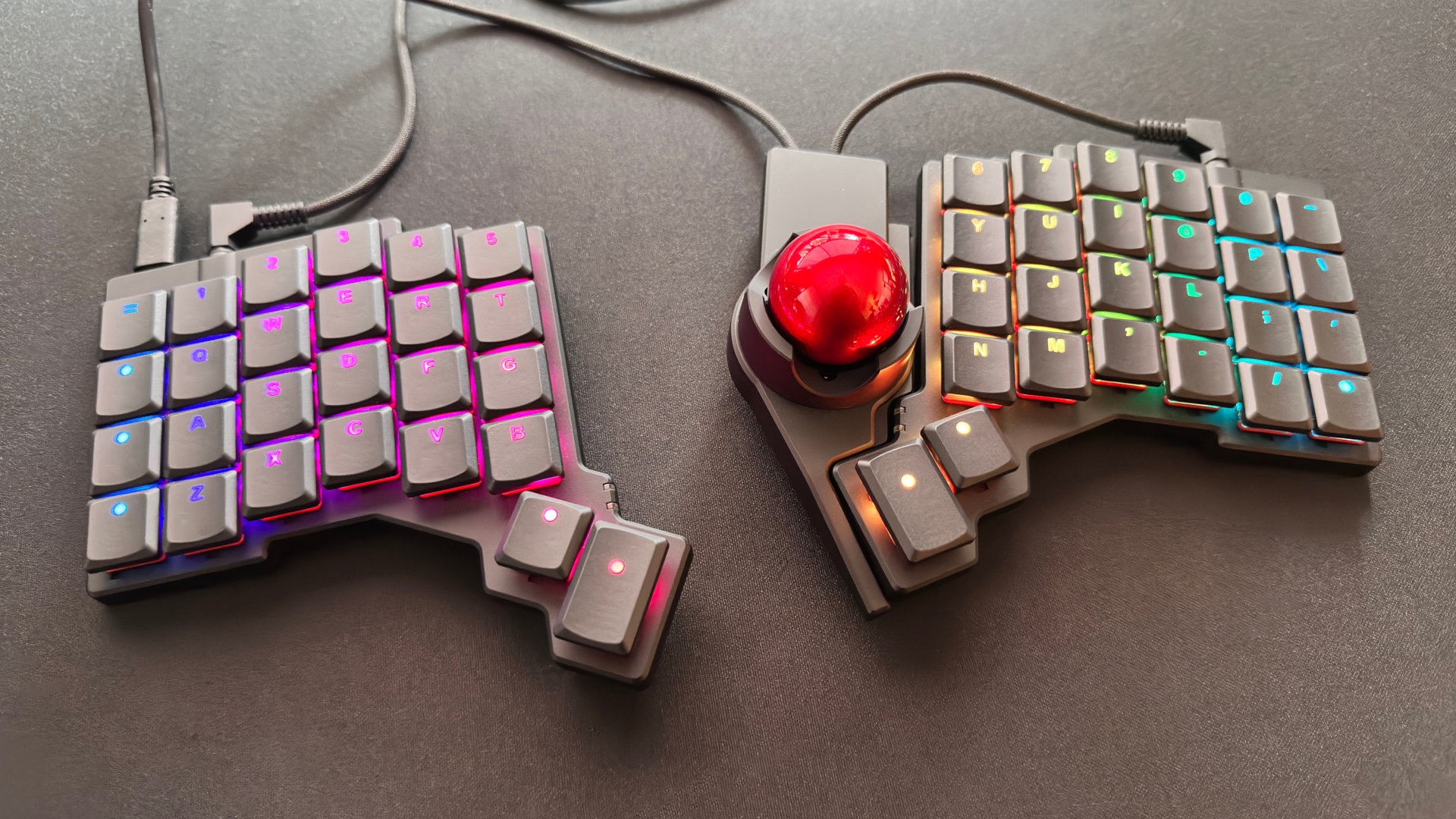AMD's RDNA 2 GPUs are finally heading to laptops this June
Nvidia's domination of laptop graphics could be about to come to an end.

AMD's latest GPU architecture, RDNA 2, has impressed on the desktop, so it seems only logical that it's heading to laptops too. And sure enough, that's exactly what AMD has just announced. The red team has broken cover to release three new GPUs for the laptop market: the Radeon RX 6800M, RX 6700M, and RX 6600M. Could we finally see some competition in the laptop graphics space?
Gaming laptops have seen significant growth over the last year—up 27% compared to the previous year according to AMD. That's impressive. The vast majority of those gaming laptops have used Nvidia's silicon to provide the necessary muscle to handle the latest games. This is something that AMD doesn't want to see repeated this year, and its RDNA 2 graphics architecture means it actually has a decent chance for a change.
Compared to the first generation of RDNA, this latest spin offers 1.5X the performance or uses up to 43% less power. It's also capable of performing 1.77X better when the laptop isn't plugged into the socket. That's a promising start, to be sure.
| Model | Radeon RX 6800M | Radeon RX 6700M | Radeon RX 6600M |
|---|---|---|---|
| GPU Name | Navi 22 | Navi 22 | Navi 23 |
| GPU Architecture | RDNA 2 | RDNA 2 | RDNA 2 |
| GPU Process | 7nm | 7nm | 7nm |
| Comput Units & Ray Accelerators | 40 | 36 | 28 |
| Game Clock | 2300 MHz @ 145W | 2300 MHz @ 135W | 2177 MHz @ 100W |
| GDDR 6 | 12 GB | 10 GB | 8GB |
| Memory Interface | 192-bit | 160-bit | 128-bit |
| Infinity Cache | 96 MB | 80 MB | 32 MB |
Top of the new mobile lineup is the AMD Radeon RX 6800M (Navi 22), which has 40 compute units and ray accelerators, a game clock of 2,300MHz, 12GB of GDDR6 and 96MB of Infinity Cache.
These new graphics chips also support Smart Access Memory (AMD's impressive take on Resizable BAR) and AMD SmartShift, which can shift focus from the CPU to the GPU (or vice versa) when needed. Basically in laptops with an AMD CPU and GPU, you can expect better performance overall, and at around a 10% increase, that's no small thing.
The big question for any GPU is how does it perform in games? Pretty well, according to AMD's own figures, at least. Obviously, we'd need to verify these but as long as they're close to the numbers AMD presented, it paints a good picture for AMD's new GPU.
AMD showed off another slide at pre-briefing comparing the 12GB RX 6800M aginst the 8GB RTX 3070 and 8GB RTX 3080, and it was competitive in the likes of Assassin's Creed Valhalla, Borderlands 3, CoD: Black Ops Cold War, Dirt 5, and Resident Evil Village. Although it's worth noting that all of these, bar Call of Duty, are games developed with AMD, so they've been optimized for its hardware to an extent anyway. This shouldn't detract from the decent performance on offer though.
Keep up to date with the most important stories and the best deals, as picked by the PC Gamer team.
The Radeon RX 6700M (Navi 22) is one rung down from the top chip in the lineup, and feature 36 CUs, 10GB of GDDR6, 80MB Infinity Cache, although has the same game clock of 2,300MHz. It's still aimed at 1440p gaming, with AMD going for 100fps in popular games. It should be a cheaper GPU for laptop manufacturers to build around.
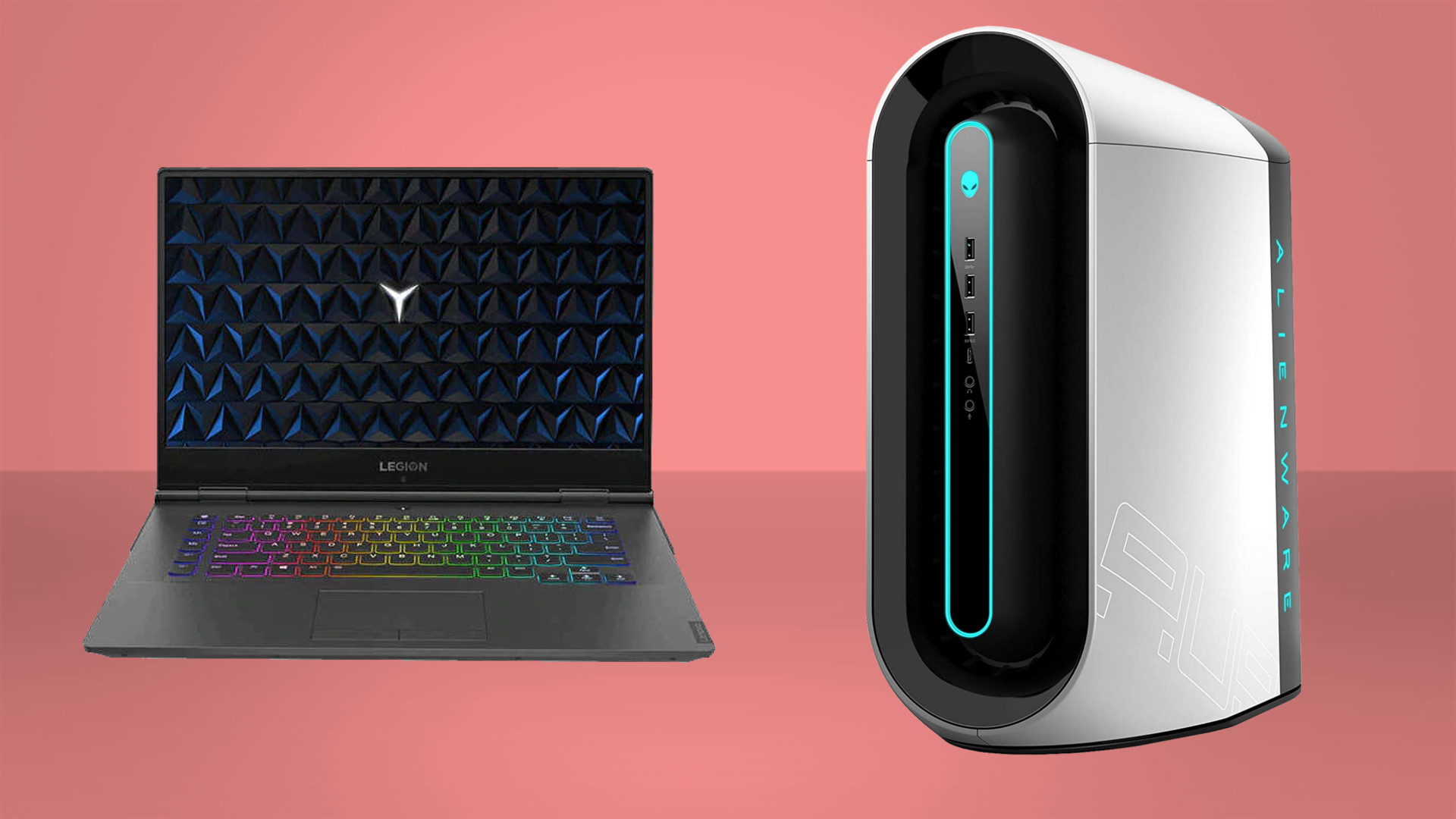
Best gaming PC: the top pre-built machines from the pros
Best gaming laptop: perfect notebooks for mobile gaming
Finally, we have the AMD Radeon RX 6600M (Navi 23) which is focused on 1080p gaming. It lays claim to 28 CUs, with a 2,177MHz game clock, 8GB of GDDR6, and 32MB Inifinity Cache.
Once again AMD is aiming at 100fps across a range of titles—more exacting triple-A titles will be below though, while some of the faster esports names will manage over 200fps. 1080p is a perfectly fine resolution for gaming on the go though, and it'll be interesting to see how this compares to the GeForce RTX 3060.
AMD is also introducing a design framework for manufacturers that aims to boost performance, help marry the hardware with the right displays, make sure it all works well with AMD Radeon software, and that the end-user essentially has a good all-over gaming experience.
A big challenge for AMD is persuading laptop manufacturers to use its graphics silicon instead of Nvidia's, but it appears to have already made some inroads here, with Asus, HP, MSI, and Lenovo all down to produce laptops around Radeon RX 6000M GPUs. The first of which will be available in early June—the Asus ROG Strix G15 will be the flagship machine, boasting a Ryzen 9 5900HX and a Radeon RX 6800M.
Alan has been writing about PC tech since before 3D graphics cards existed, and still vividly recalls having to fight with MS-DOS just to get games to load. He fondly remembers the killer combo of a Matrox Millenium and 3dfx Voodoo, and seeing Lara Croft in 3D for the first time. He's very glad hardware has advanced as much as it has though, and is particularly happy when putting the latest M.2 NVMe SSDs, AMD processors, and laptops through their paces. He has a long-lasting Magic: The Gathering obsession but limits this to MTG Arena these days.


